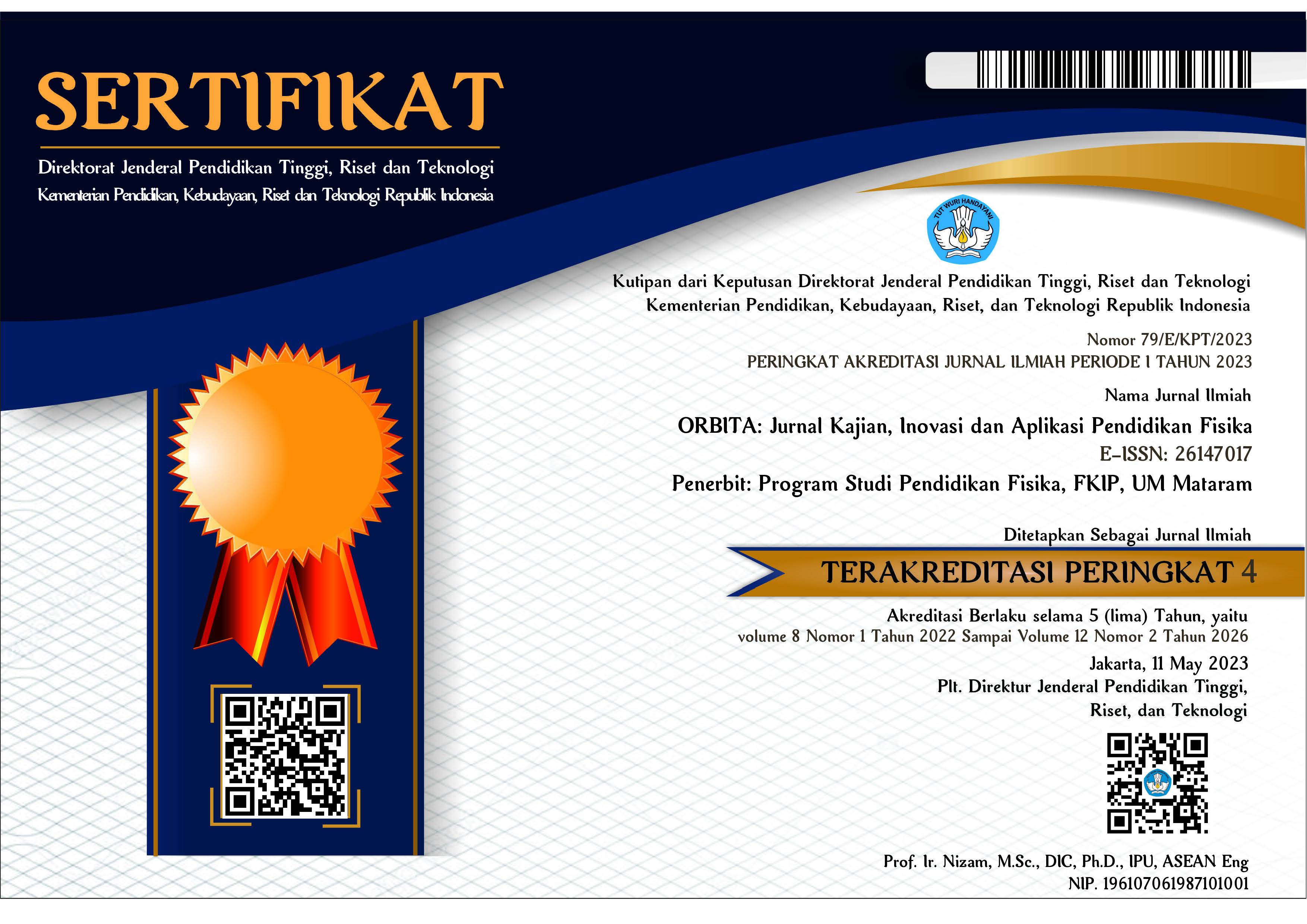Fabrication of fine particle powder from Teak (Tectona Grandis) leaves as a textile dyeing with environmentally friendly technology
Abstract
Green technology for eco-friendly dyes in textile industries has been required in recent decades. An innovation was established by producing textile dyes from natural sources. This research aims to identify fine particle powder's characteristics and analyze the color changes applied to the textile. The mechanical thermal was utilized to produce natural dyes. Three main stages were conducted to obtain dye powder: mordant, coloring, and fixation. The dye powder was examined for water content, phytochemical tests, FTIR, SEM-EDX, and color using the Android-based Color Analyzer and Color Grab applications. The results show that the water content of 7.21% meets the SNI 01-3709-1995 standard. So, the powder can be stored for a long time because it does not quickly spoil. In addition, the phytochemical test resulted in alkaloids, flavonoids, and tannins. This revealed that teak leaf powder can be a suitable textile dye. After that, SEM-EDX examination illustrated that the powder had a round, flat, elongated morphology, a sharp edge texture, and an irregular position. Meanwhile, the EDX signified that the recognized chemical elements did not damage the environment, and the powder diameter ranges from 0.5-8.5 μm. The powder size complied with the fine particle powder category. To analyze the color from the dye powder application, there were color changes during each dyeing process. During all stages, from making the powder to applying the powder to the fabric, environmentally friendly technology was utilized. Therefore, this research can promote new opportunities for innovation and development of highly competitive products towards a more environmentally friendly and sustainable textile industry.
Keywords
Full Text:
PDFReferences
Afan, M., Agustina, S., & Ruslan, R. (2020). Pemanfaatan Ekstrak Daun Sirih Hijau (Piper Betle L.) Sebagai Zat Pewarna Alami (ZPA) Tekstil Dan Aplikasinya pada Benang Tenun. JURNAL REDOKS: JURNAL PENDIDIKAN KIMIA DAN ILMU KIMIA, 3(2), 20–27.
Ariviani, S. (2010). Total antosianin ekstrak buah salam dan korelasinya dengan kapasitas anti peroksidasi pada sistem linoelat. Agrointek: Jurnal Teknologi Industri Pertanian, 4(2), 121–127.
Armanzah, R. S., & Hendrawati, T. Y. (2016). Pengaruh waktu maserasi zat antosianin sebagai pewarna alami dari ubi jalar ungu (Ipomoea batatasl). Prosiding Semnastek.
Febriani, Y., Ikhsan, E. A., & Ardyati, S. (2021). Analisis fitokimia dan karakterisasi senyawa antosianin ubi jalar ungu (Ipomea batatas) sebagai bahan dasar lulur hasil budidaya daerah Jenggik Lombok. SINTEZA, 1(1), 1–6.
Hermawati, Y., Rofieq, A., & Wahyono, P. (2015). Pengaruh konsentrasi asam sitrat terhadap karakteristik ekstrak antosianin daun jati serta uji stabilitasnya dalam es krim. Prosiding Seminar Nasional Pendidikan Biologi, 21, 301–308.
Kurniawidi, D. W., Dewi, D. L., Rahayu, S., Budianto, A., & Alaa, S. (2023). Characteristics of Dyeing Cotton Thread Using Fine Particle Powder from Tectona Grandis Leaf. Jurnal Penelitian Pendidikan IPA, 9(10), 8173–8179.
Lestari, A. A., Wardenaar, E., & Mariani, Y. (2018). Pemanfaatan tumbuhan penghasil warna alami untuk tenun ikat oleh suku Dayak Iban di Dusun Tekalong dan Dusun Kelawik Kapuas Hulu Kalimantan Barat. Jurnal Hutan Lestari, 6(4).
Mardialina, G., Alaa, S., Rahayu, S., & Kurniawidi, D. W. (2018). Innovation to increase the tensile strength of sade woven yarn using sizing method. The 3rd International Conference on Science and Technology, 124–128.
Mohammed, N. A., Refay, Y. A., Migdadi, H. M., Al-Somain, B. H., Al-Selwey, W. A., Abdela, K. A., Alghamdi, S. S., Muharram, A. A., & Farooq, M. (2019). Agro-Morphological Characterization of Lentil Genotypes in Dry Environments. International Journal of Agriculture and Biology, 22(6). https://doi.org/10.17957/IJAB/15.1204
Purnomo, W., Khasanah, L. U., & Anandito, R. B. K. (2014). Pengaruh Ratio Kombinasi Maltodekstrin, Karagenan dan Whey Terhadap Karakteristik Mikroenkapsulan Pewarna Alami Daun Jati (Tectona grandis L. f.). Jurnal Aplikasi Teknologi Pangan, 3, 3.
Purwanto, A., Kwartiningsih, E., & Mastuti, E. (2012). Pembuatan Zat Warna Alami dalam Bentuk Serbuk untuk Mendukung Industri Batik di Indonesia. Jurnal Rekayasa Proses, 6(1), 26–29.
Rahayu, S., Kurniawidi, D. W., Hudha, L. S., & Alaa, S. (2021). New techniques for improving the quality of cotton yarn using natural dyes from teak leaves (Tectona grandis), ketapang leaves (Terminalia catappa), and tender skin (Lannea coromandelica). IOP Conference Series: Earth and Environmental Science, 637(1), 012084.
Rahayu, S., Wirawan, R., & Kurniawidi, D. W. (2023). Aplikasi Senyawa Antosianin dari Daun Jati (Tectona Grandis) Sebagai Pigmen Warna Alami pada Kain Katun. Kappa Journal, 7(1), 1–9.
Suzery, M., Lestari, S., & Cahyono, B. (2010). Penentuan total antosianin dari kelopak bunga Rosela (Hibiscus sabdariffa L) dengan metode maserasi dan sokshletasi. Jurnal Sains Dan Matematika, 18(1), 1–6.
Winarno, F. G. (2004). Kimia pangan dan gizi.
DOI: https://doi.org/10.31764/orbita.v10i1.22509
Refbacks
- There are currently no refbacks.

This work is licensed under a Creative Commons Attribution-ShareAlike 4.0 International License.
______________________________________________________
ORBITA: Jurnal Pendidikan dan Ilmu Fisika
p-ISSN 2460-9587 || e-ISSN 2614-7017
This work is licensed under a Creative Commons Attribution-ShareAlike 4.0 International License.
EDITORIAL OFFICE:


























